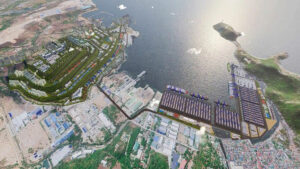
Regional development key to decongest Metro Manila
by Almira Louise S. Martinez, Reporter
Investing in regional developments would help attract more investors in the provinces and decentralize Metro Manila, an expert said.
“Puno na po ang Metro Manila [Metro Manila is already full], so let’s go to Bataan, Bulacan, Cavite, and even Pampanga,” Doctor Cecilio K. Pedro, President of the Federation of Filipino Chinese Chambers of Commerce & Industry Inc. (FFCCCII) said in a forum on Thursday.
“We must focus on a special region..and then it will go to Visayas, Mindanao, in the future, copying a model – a model of excellence,” he added.
One of the regional developments aiming to boost the economy in provinces and ease Metro Manila congestion is the Bataan-Cavite Interlink Bridge (BCIB).
“Shorter travel times between major economic zones will streamline supply chains, leading to cost savings for businesses,” the Philippine Economic Zone Authority (PEZA) said in a written statement.
As the province awaits the BCIB groundbreaking, other infrastructure developments are already in line, according to the 2nd District of Bataan Congressman Albert S. Garcia.
With the increased accessibility, the province expects an influx in road traffic, specifically in the Roman Superhighway.
“We are working on another alignment parallel to Roman North and South as early as now to prepare for the incoming traffic from the bridge in the coming years,” Mr. Garcia told BusinessWorld in Filipino.
He added that plans to revive the proposal for an international seaport and transshipment hub to solve the cost of logistics and power in the manufacturing industry are ongoing.
“In Freeport, we have already solved the cost of power at P6/kWh. If we can design the port to cater bigger ships, we can also lower down the cost of logistics,” Mr. Garcia said in Filipino.
Unlike the shallow waters in the Port of Manila, Mr. Garcia said the proposed hub could cater to bigger ships without the need for lighters or cargo transports.
“8 to 10 trillion dollars worth of trade passes through this route… Imagine if we have a transshipment port, we can take part in all these trades happening.”
Coastal roads and coastal defense were also part of the development plans to improve the province’s accessibility further.
“Kahit wala kaming airport, kami yung province na pinaka-accessible sa lahat ng airport kapag natuloy ‘tong coastal road [Even though we don’t have an airport, we will be the most accessible province to all airports if the coastal road happens,]” Mr. Garcia said.



